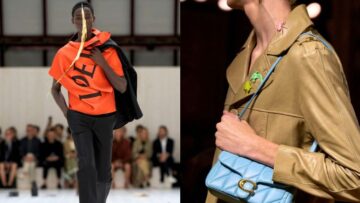The circular fashion market is expanding rapidly, driven by both technological innovations and evolving consumer preferences. This transition not only addresses ecological concerns but also opens up new economic opportunities, making it a p
Sustainability
-
-
While Bangladesh has demonstrated its strength in sustainability, awareness of Digital Product Passport remains limited. However, in discussions with Apparel Resources, exporters are confident that, despite the initial challenges, they will
-
Banks are incorporating Environmental, Social and Governance (ESG) criteria into their lending and investment strategies, ensuring that funds are directed towards projects aligned with sustainable principles.
-
As sustainability has become more of a priority for consumers, the demand for alternatives has soared in the form of secondary fashion retail businesses that include pre-owned, pre-loved, rental and thrift.
-
Several innovative fabrics are emerging, offering eco-friendly alternatives and challenging the very essence of what fashion fabrics can be made from.
-
The fashion industry faces significant pressure to adopt effective recycling practices swiftly. While over-production remains a critical concern, emerging technologies offer promising solutions to reduce waste and enhance sustainability.
-
Sustainability
Co-creating sustainability: Bangladesh’s RMG industry and global sustainability advocates join forces
Bangladesh’s sustainable initiatives are being pushed through greater emphasis on ‘Co-Creation’ of sustainability as brands and impact investors join hands with factories, providing financial support to RMG companies and helping them
-
Sustainability
Rethinking profit without depleting resources: Analysis of Textile Exchange ‘Materials Market’ report
In its latest 'Materials Market' report, Textile Exchange highlights the key global market trends with an aim to aid the industry in achieving a 45 per cent reduction in greenhouse gas emissions that come from producing fibres and raw mater
-
India, aiming to become a global manufacturing leader, must align with international standards to meet global benchmarks and capture market share, especially as big brands pledge to cut greenhouse gas emissions to ‘net zero’ and ensure






